Interactive maps with automatically checked assignments are a modern and effective tool for classroom work and self-preparation of students in grades 5-9 for history classes. The presence of prompts and analysis of the answer allows students to work with assignments at home, without the help of a teacher.
The disc contains a set of interactive maps on history and the 1C software environment: Constructor of interactive maps.
An elective set of interactive maps on world history
40 cards, each of which is presented in two versions:
Control task;
simulator task with a hint.
Periods:
Ancient world history;
history of the Middle Ages;
new story;
recent history.
Level:
For the 59th grade;
can accompany any textbooks from the federal list.
Forms of training:
Classroom-lesson;
design;
remote;
homework.
Technical features:
Automatic check of the answer;
customizable set of tools to complete the task;
full compatibility with the Internet;
attribution and packaging in CRC format;
transfer of the assessment to the electronic journal of the system of organization and support of the educational process 1C: Education 4. School 2.0.
1C: Constructor of interactive maps
A modern creative tool that allows a teacher-methodologist to create maps, diagrams and assignments saturated with interactive objects on their own, without the help of programmers and specialists in the field of computer graphics.
The constructor allows
Edit the finished map, correct, supplement, create a similar one;
quickly prepare a new demo card, control or simulator task;
no installation required, you can work in the lesson from scratch.
The constructor is designed to create Internet and SCORM-compatible cartographic-based models using the following types of interactivity.
Presentation scheme
It is intended to explain the material in the lesson. It is based on adding an arbitrary number of additional objects to the cartographic background, with which it will be possible to manipulate in the lesson for presentation purposes:
Turn on / off the display of objects at the right time;
highlight the object to focus the attention of students;
move, modify, recolor objects;
supplement the map with objects directly during the lesson.
Checked task
Similar to tasks performed on contour maps. It is based on adding objects to the cartographic background, the parameters of which (location, shape, color, and others) will have to be reproduced by the student completing the task. A prompt can be displayed if necessary. The program checks the correctness of the task automatically.
The objects to be scanned can be of the following types:
Symbols;
arrows;
broken lines, both open and closed (areas);
text fields and anchored captions;
pie charts;
radio buttons and checkboxes.
Interactive models created with the Constructor can be effectively used to accompany classes in geography, history, as well as those subjects in the field of natural science and social studies in which it is supposed to work with maps.
Buy in the online store OZON.ru
Story. Cartographic training. A guide to prepare for the exam. Markin S.A.

R. on D .: 2016 .-- 159 p.
The manual is intended both for secondary school students in preparation for the USE in the course of national history, and for teachers of educational institutions in organizing the study of this course, its repetition and generalization. The manual includes maps and assignments to them for all periods of Russian history, which will help students to systematize existing knowledge and, if necessary, fill in the gaps in a timely manner.
The manual is a universal help in the process of forming and improving students' basic cartographic knowledge, which will ensure the successful passing of the exam in history.
Format: pdf
The size: 45.6 Mb
Watch, download:drive.google ; Rghost
Content
Foreword
Section 1. Recommendations for completing tasks for the ability to work with a historical map, scheme (B8, B9, BIO, B11)
Section 2. Training tasks
Topic 1. History of Russia from ancient times to the middle of the IX century
Topic 2. Russia in the second half of the 9th - early 11th century
Topic 3. Russia in the XI - first third of the XII century
Topic 4. Russian lands in the first third of the XII - first third of the XIII century
Topic 5. The struggle of Russia against foreign invaders in XIII-XTVBB
Topic 6. The struggle of Russia for unity and independence in the KSU-XV centuries
Topic 7. Russia in the XVI century
Topic 8. Time of Troubles (1598-1613)
Topic 9. Board of Mikhail Fedorovich (1613-1645)
Topic 10. Board of Alexei Mikhailovich (1645-1676)
Topic 11. The board of Fyodor Alekseevich (1676-1682) and Sophia Alekseevna (1682-1689)
Topic 12. The reign of Peter I (1689-1725)
Topic 13. Russia in the era of palace coups (1725-1762)
Topic 14. Russia during the reign of Catherine II (1762-1796) and Paul I (1796-1801)
Topic 15. Russia during the reign of Alexander I (1801-1825)
Topic 16. Russia during the reign of Nicholas I (1825-1855)
Topic 17. Russia during the reign of Alexander II (1855-1881)
Topic 18. Russia during the reign of Alexander III (1881-1894)
Topic 19. Russia during the reign of Nicholas II (1894-1917)
Topic 20. The Great Russian Revolution (1917-1922)
Topic 21.The USSR during the New Economic Policy (1921-1928)
Topic 22. USSR in the period of industrialization (1929-1941)
Topic 23. Great Patriotic War (1941-1945)
Topic 24. USSR in the period of post-war restoration of the national economy (1945-1953)
Topic 25. USSR during the "thaw" (1954-1964)
Topic 26. USSR during the "part" period (1964-1984)
Topic 27. Perestroika in the USSR (1985-1991)
Topic 28. Russian Federation "1991-2014.
Topics 29. Economic development of Russia in different periods
Answers to training tasks.
The maps clearly demonstrate the process of historical development of the Russian state, the unification and disintegration of lands, the annexation and loss of territories, the emergence and expansion of cities, the course of hostilities. The presented materials cover a long period of time. The maps contain information about the history of Russia from the beginning of the formation of the Slavic community to the formation of the Russian Empire, from the formation of the Russian Empire to its tragic collapse. This section also contains maps characterizing the events of the national history of the 20th century: the Civil War, the creation of the USSR, the Great Patriotic War and the post-war period.
- - In order for the state to remain strong and powerful in the Middle Ages, its rulers had to regularly make campaigns against their neighbors.
- - In the 19th century, Russia's foreign policy meant expanding borders by establishing a protectorate and colonizing territories in the south and east.
- - The factor that determined Russia's foreign policy at the beginning of the 18th century was the access to the Baltic Sea, which Russia received as a result of the Northern War.
- - The largest military conflict in the history of mankind is the Second World War. This conflict did not leave any country on the world map unaffected; it entailed huge human casualties, as well as complete devastation and crisis in the world economy.
- - One of the most significant and tragic events of the 20th century for Russia was the Great Patriotic War. The offensive tactics of the German troops were broken by the courage and heroism of the Soviet soldiers, and the wisdom of the officers became the model of military tactics.
- - The Great Patriotic War began unexpectedly. German troops invaded the territory of the Soviet Union and in the first days of the war were able to advance far ahead, since the unmobilized Soviet troops could not provide a quick rebuff.
- - Before the attack on the Soviet Union, World War II took place on the territory of European countries. Having invaded Poland, Germany, one after another, occupied several states and continued to conduct aggressive tactics of military operations.
- - The establishment of Soviet power covered a significant part of Europe and spread quite rapidly, both in the RFSR and the BSSR and the Ukrainian SSR.
- - As a result of the war with Turkey and the three partitions of Poland, impressive territories were annexed to Russia, a protectorate was established over Georgia.
- - Military actions of the liberation struggle of the Ukrainian and Belarusian peoples in the middle of the 17th century, which ended in the reunification of Ukraine with Russia.
- - The map shows the territorial changes in the borders of Russia in the 17th century - the wars of Alexei Mikhailovich and the expedition to Siberia significantly expanded the spheres of influence of the state.
- - Ermak's campaigns in Siberia were of great importance for Russia in the 16th century - the vast territories annexed as a result of his expedition had a beneficial effect on the development of the country.
- - Ivan III's active foreign policy actions are shown on the map. The final liberation from the Mongol-Tatar yoke was achieved after a successful standing on the Ugra River.
- - The once mighty Golden Horde in the 15th century, due to internal conflicts and civil strife, fell apart into several independent states.
- - The map shows the conquest campaigns of the Moscow princes in the middle of the 15th century, aimed at annexing the recalcitrant cities - Tver, Yaroslavl, Rostov.
- - The map shows the borders of the Russian principalities by the end of the XIV century - there is a significant expansion of the territories of the Moscow and Lithuanian principalities.

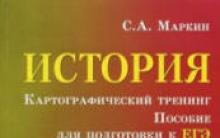
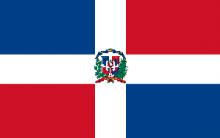
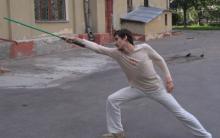

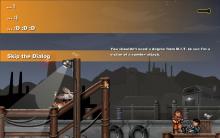
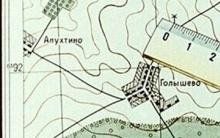




Orientation without a map
Yamal Peninsula (23 photos)
Yamal Peninsula (23 photos)
Map of Tver region Road map of Tver region detailed villages
Old topographic maps of the Tula province Old villages in the Tula region